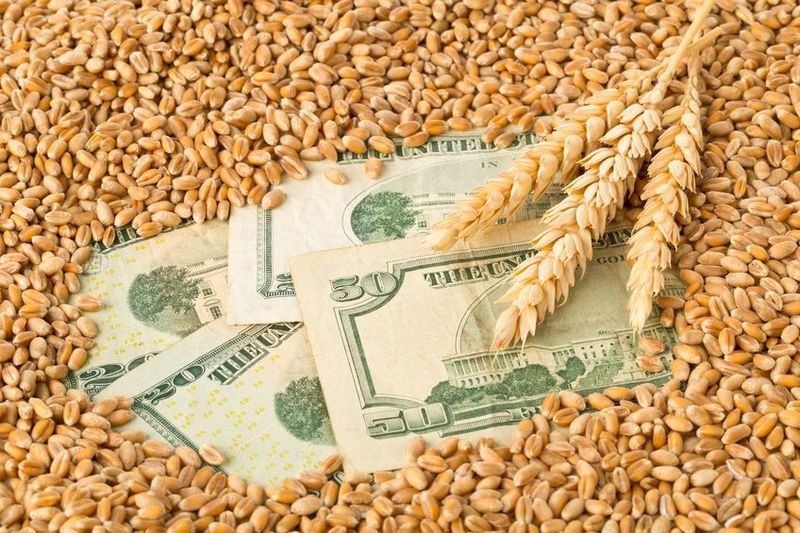Wheat price rollercoaster – Will wheat rally comeback this year?

Wheat prices have been on a wild ride the past four years. After years of stability, a perfect storm of factors sent them soaring. A global supply deficit, pandemic disruptions, and the war in Ukraine all contributed to this surge. However, prices have now plunged back to levels not seen since 2020. Will this downward trend continue, or could future production issues caused by weather and climate change cause another price spike?
Between 2016 and 2020, wheat prices remained relatively stable due to a global overproduction. However, this changed as production prospects worsened – partly due to rising global temperatures – while demand, particularly from China and India, continued to climb. The pandemic initially caused a dip, but supply chain problems soon triggered a new upward trend.
The outbreak of the war in Ukraine further intensified the situation. As major wheat exporters, Russia and Ukraine accounted for a significant portion of global exports. Fears of disrupted Ukrainian exports and sanctions on Russia initially pushed prices nearly double. However, the expected price boom was short-lived.
Access to the Russian market remained largely uninterrupted. Ukraine also managed to continue some exports via land routes and a partially reopened sea route. To top it off, Russia enjoyed a record harvest, further filling its already overflowing warehouses. This massive available supply, particularly attractive to Asian buyers due to its low price, became a major drag on global wheat prices.
Russian wheat is currently priced below $190 per tonne at Black Sea ports, significantly cheaper than US wheat at $207 and Western European wheat at $225. This price pressure is likely to continue until Russia exhausts its current surplus and the next harvest arrives – which is also expected to be strong.
While the US isn’t a top wheat producer or exporter, its market data still holds significant sway. With exports at their lowest level since the 1970s, the US wheat price faces strong downward pressure. This slump is due to a combination of factors, including increased demand for cheaper Russian wheat and a strong US dollar making American wheat less competitive.
However, there are potential signs of future trouble for the US market. The USDA’s March prospective planting report projects a 5% decrease in planting acreage compared to the previous season. Despite this, production and ending stocks for the 2024/2025 season are still expected to increase as projected harvest acreage is expected to be higher. The projected farm gate price for the upcoming season is slightly higher than the current market price, but remains lower than the previous ending season farm gate prices.
Despite the current oversupply and falling US exports, the global situation remains tense. The ongoing war in Ukraine and the possibility of Russia restricting Ukrainian exports raise concerns. Additionally, neighbor countries are hesitant to rely on overland routes for Ukrainian exports, potentially disrupting further shipments.
The volatile situation in the Middle East and potential blockades on the Red Sea could further disrupt supplies to key importers in Africa and Asia. Weather patterns are another wild card. Rising global temperatures have led to prolonged droughts in major producers like Australia and Canada in recent years, and the US could face a similar fate. Forecasts for the summer predict higher-than-average temperatures and lower humidity, potentially leading to a smaller harvest than the prospective planting acreage suggests. Additionally, low prices might further discourage planting and harvest acreage may be even lower than last year.
The current price trend following the 2022 peak bears a resemblance to what happened after similar peaks in 1980, 1996, and 2008. Historically, the downward cycle after such peaks tends to end around 600 sessions after the peak. If this pattern holds true, a price rebound could occur around the US wheat harvest time in August and September of this year.
While Russia’s massive supply might continue to exert downward pressure in the short term, weather factors could very well lead to a price bottom by the end of the summer.
Read also
Ukraine is ready to help Syria prevent food crisis – Zelenskyy
Join with the EARLY RATE – 22 International Conference BLACK SEA GRAIN.EUROP...
Brazil sugar output decreased by 23% — Unica
Algeria imposes a complete ban on durum wheat imports in 2025
Weather in Brazil and Argentina remains favorable for the future harvest of soybea...
Write to us
Our manager will contact you soon



